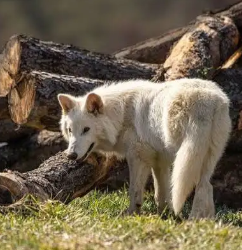
Extinct animals will be gone forever, right? With the new technology from Colossal, the company that brought back the Dire wolf, we can’t make that assumption anymore. Colossal Biosciences utilized ancient DNA extracted from dire wolf fossils—a 13,000-year-old tooth found in Ohio and a 72,000-year-old skull from Idaho—to identify key genetic differences between dire wolves and their closest living relatives, gray wolves. Focusing on 14 genes associated with traits like size, muscles, and fur color, scientists edited the genomes of gray wolf cells using CRISPR technology. These modified cells were then put into dogs, resulting in the birth of the three pups. The possibilities with this technology are unimaginable. They can pretty much make anything as long as they have a close relatives DNA. There are some debates on this topic, though. Critics argue that the animals are genetically modified gray wolves rather than authentic revivals of the extinct species.
Some people, including myself, believe that this power of bringing things back from extinction could get too powerful. Hypothetically, they could take a human’s DNA and clone them. This is not okay, so we have to make sure that there are rules for making things. They could bring back dinosaurs, which could easily kill us. They could also bring back or make more of animals that are harmful to ecosystems. I interviewed Jax Keslar on his thoughts about this monumental scientific breakthrough.
Jax believes this could also get very dangerous. He said that it reminds him of Jurassic Park. Colossal Biosciences plans to continue its de-extinction efforts, with projects targeting other extinct species such as the woolly mammoth, Tasmanian tiger, and dodo. The company aims to apply its genetic technologies to conservation, hoping to increase genetic diversity in endangered species and restore ecological balance.











































